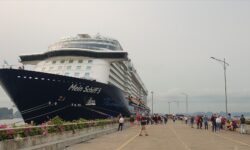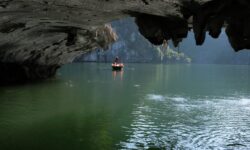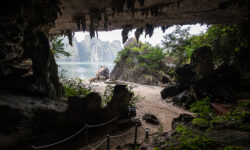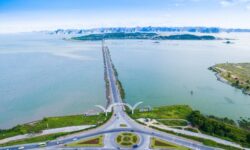Quang Ninh, a northern coastal province in Vietnam, plans to prioritize tourism and the sea economy in its development strategy, according to the provincial People’s Committee. The province is home to the UNESCO World Natural Heritage site Ha Long Bay, a popular destination for domestic visitors. To attract millions of tourists each year, Quảng Ninh aims to increase sea tourism’s share to 75-80% of its total number of visitors by 2030, or 28.5 million, including 8 million foreign visitors.
To achieve this objective, Quang Ninh emphasizes building a model of sustainable tourism and improving the quality of services for visitors. Tourism is expected to create nearly a quarter of a million jobs for local residents. In recent years, the province has invested significantly in developing and upgrading infrastructure networks to connect all tourism hubs to major road networks in the Red River Delta.
Additionally, Quang Ninh has been collaborating with businesses and developers to establish systems of malls, supermarkets, convenience stores, vending machines, and traditional markets near local tourist attractions. The provincial authorities have also partnered with large domestic and international tourism brands to develop the numerous islands in the Van Đon – Co To and Mong Cai regions. Several key projects are already underway to build infrastructure on previously isolated and unpopulated islands.
Quang Ninh is also focusing on the high-end segment of the market, with plans to offer more quality products and services to visitors in the coming years. Despite setbacks during the pandemic, the province remains fully committed to the recovery and long-term development of the tourism industry.
Apart from natural wonders, Quang Ninh boasts 530 historic sites and some of the most distinguished folk festivals in Vietnam, including the ancient rituals of the Tay of Binh Lieu, which have been recognized as UNESCO’s intangible cultural heritage.

Moreover, Quang Ninh aims to maintain an 18.5% growth rate annually for its port industry and projects that its total net income from the industry will reach over VNĐ47.5 trillion (US$2 billion), or 3-3.5% of the province’s gross regional domestic product, by 2030. The province also plans to expand its aquaculture production by improving connectivity with road infrastructure in the region. Quang Ninh intends to increase seafood production to 225,000 tonnes and export value to half a billion dollars by 2030, creating 50,000 jobs in the aquaculture industry alone. Measures have been taken to raise awareness among fishing communities and implement stricter environmental laws to protect and preserve the ocean’s natural resources.
Various projects have also received the go-ahead to set up logistic centers, food processing hubs, and repair shops for fishing vessels, aiming to improve efficiency and create added value for seafood products. Additionally, three key aquaculture production centers have been established using modern technologies.







